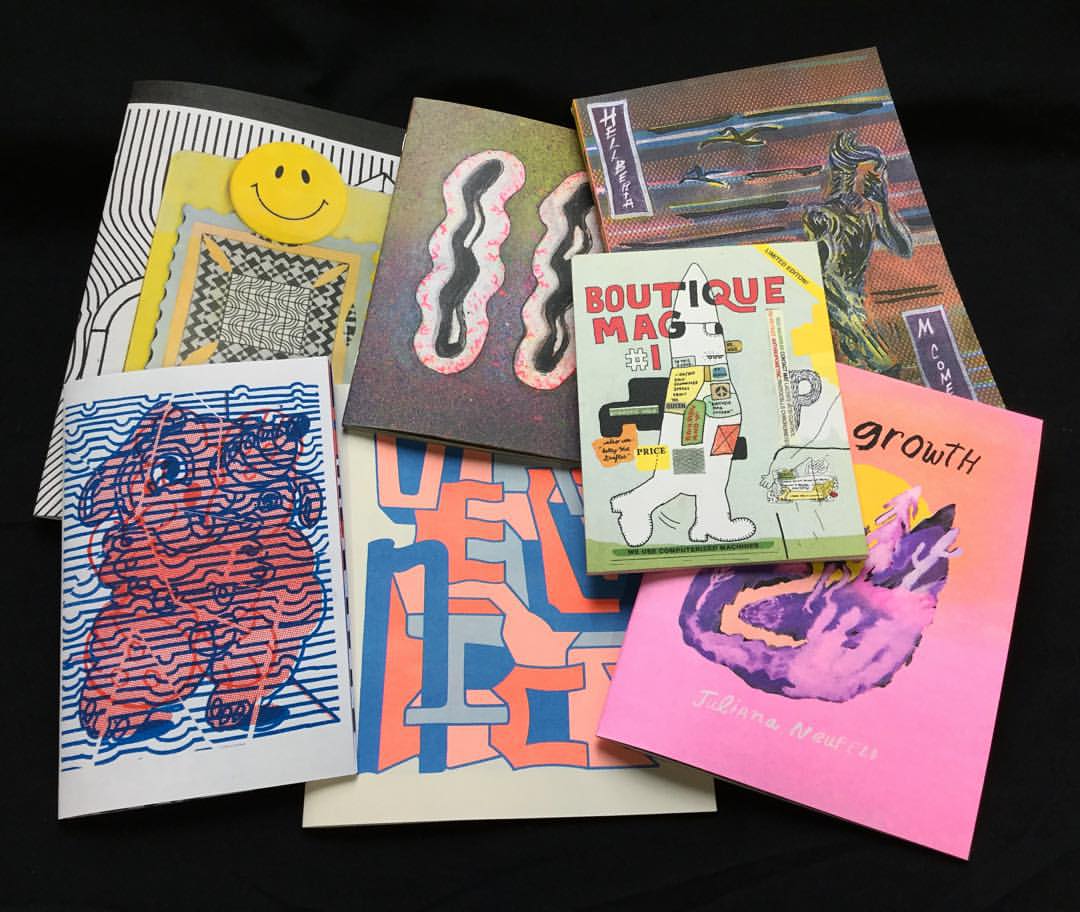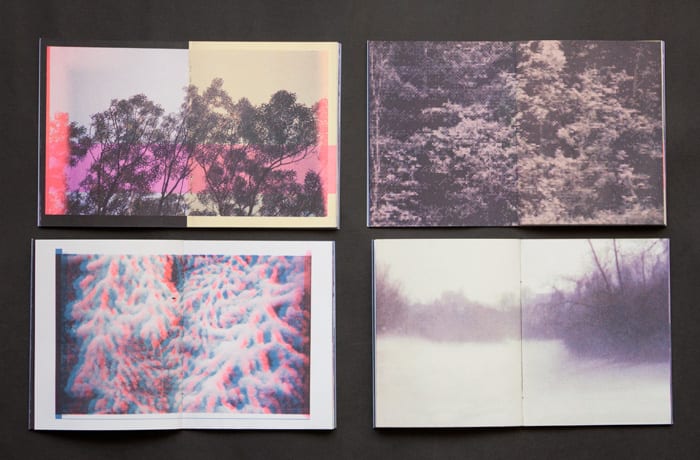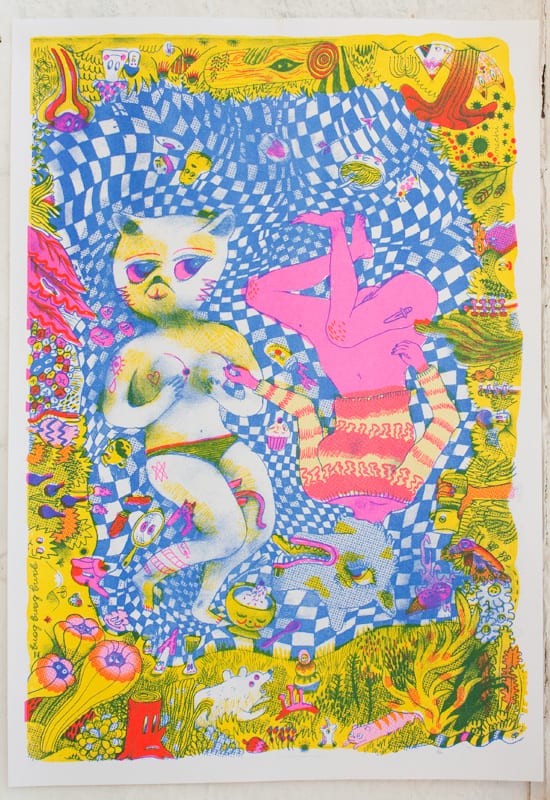
In part 1 of this series I spoke to Mickey Z about how she got started with risograph printing. Check out Risograph Workbook 1.
Now Jesjit Gill of Colour Code Printing tells his riso story.
==============================================
Jesjit, you were really one of the first printers I encountered who garnered a reputation for doing great work. I remember hearing about Colour Code from Michael Comeau. Did you actively "try and get work" or was it something you just fell into?
A bit of both. I got my first riso in 2011 to make my own prints and to start publishing comics and zines. I started to learn more about printing, making books, prepress, binding, etc., and I really loved the process. Less than a year after that I started Colour Code and was actively pursuing work.
Tell me about your shop. From your website I see what kind of machines you use, but paint a picture for us of day to day life. What is a typical week like?
I run Colour Code with my girlfriend Jenny Gitman. More often than not we are working six or seven days a week, printing books, posters, cards, etc. Jenny handles most of the pre-press and I will do most of the production, though if one of us is away from work the other can pick up the slack on either end. It depends on how busy we are, but in a week we will generally divide up the work, i.e. a day for printing, a day for binding and finishing.

What is your risograph origin story? When did you first encounter risograph? I assume you were interested in printmaking before you discovered riso printing.
I studied printmaking, primarily screenprinting, at OCAD in Toronto. After graduating I did a residency at AS220 in Providence, Rhode Island, where I got to learn how to use a small offset press. While I was there I visited Mickey Zacchilli and saw a riso for the first time. I think I had a vague idea of what they were but when I saw one working for the first time it blew me away. At that time it perfectly encapsulated what I loved about screenprinting and what I wanted to get out of offset printing, but it was so much easier to handle in terms of costs, materials, and space. As soon as I got home from the residency, I was on the lookout for a used riso and soon after I went splits on one with Patrick Kyle and Michael Deforge.
I've noticed risograph printers have "meet ups," little fairs and conventions. I imagine it is like any other subculture. However, this one interests me because of the direct connection to bookmaking. It reminds me of zine culture and comics fandom in a way. Can you speak to how risograph printers are different than other printers beyond obvious differences in materials?
I think a large number of riso printers probably have some background in self-publishing, printmaking, comics, or whatever, experiences that give us an appreciation of the process and how accessible and easy it is to use. Riso is sometimes looked down on by other printers because of the way the ink dries, the resolution, the misregistration, etc. but as artists and designers ourselves, we come to this medium with an understanding of its limitations and are eager to explore and push those limits.


Personally, I am fascinated with how risograph printing has changed making color comics. Before risograph was around the choices were expensive offset or expensive print on demand. And often dealing with those printers was difficult. The riso printers I have engaged are not faceless sales reps on the phone who have no experience making comics. So riso printers and their enthusiasm for the materials has reinvigorated the small press scene - which has drifted into "book publishing" (like giant offset press books) - and I was hoping you could speak to that a little bit.
The significance of the riso with small press is because it is something that anyone can get into and start doing. Cartoonists and self publishers have created a mini boom of riso printing in the past few years from seeing what everyone else is doing with them and because of how easily used inexpensive riso's can be found on Craigslist or eBay.
Over the past five years we have delved deep into working with riso machines, working with different machines, figuring out how they work, how to fix them and how to make them do things you don't expect from a riso. We have a lot of experience with riso and we try to share that with the people we work with because more often than not we still have to explain how it all works. It is rare that someone hires us to print and they know much about the process besides having seen a few riso prints on the internet or somewhere. It's up to us to share our excitement for the process and it's potential. We have to temper people's expectations because the riso has a very particular quality and look. If you want to print something with a riso and you have a very specific idea of how it will be reproduced you will likely be disappointed by the process.
Can you talk about how you take on projects? Makers bringing you work and paying for the job? I've heard about the ebbs and flows around TCAF or NYartbookfair. If a comics maker wanted to hire your shop how would they go about that?
Simply emailing or calling us up and asking us to print! There are definite ebbs and flows around big book fairs, but we print almost every day all year long - we are always up for taking on new projects.
Check out Colour Code Printing here and visit their store here.
==========================================
Next week will be Ryan Cecil Smith!
==========
Here's a video from when I saw Jesjit Gill, Mickey Z, Ben Marra, Ginette Lapalme, Brian Chippendale, and Michael Comeau at TCAF 2016!
https://vimeo.com/168360837






